#scandinavian literature canon
Explore tagged Tumblr posts
Text
Love the juxtaposition of this poem with these Wilmon-pictures! And it perfectly encapsulates their, and in particular Wille's, journey.
One thing I wanted to add is that this poem is Karin Boye's most well-known one and it is part of the literature canon in Sweden and Norway at least. It is very strongly tied to her name here (the first line of the poem pops into my head as soon as I hear her name and this seems to be the case for many). So I think for many of us Scandinavians, this poem forms a sort of subtext to the show as soon as Boye's name is mentioned. If anyone is interested, I have written an analysis of Wille's growth in the light of this poem here:
There are two aspects of the poem which are relevant to Wille's journey and which I think aren't as clear in Jenny Nunn's translation. The first is that the lines that start in "of course" in this translation actually start with ja visst in the original, which rather means "yes, of course". It makes the poem sound like it is a reply to someone who is in the midst of this painful journey (as Wille was when they started working on Karin Boye in the series), and who is perhaps wondering if it will always feel like this. The second is that the verb used in the line translated to "then, when fear no longer exists" is hålla "to hold, restrict", meaning that the line could rather be translated to "then, when no fear holds (them) back anymore". In other words, we don't need to be completely free of fear to blossom, we just need to not let our fears restrict us anymore (which fits Wille's growth much better - in his speech at the end of season 2, Wille confirms his involvement with Simon and comes out despite being afraid).


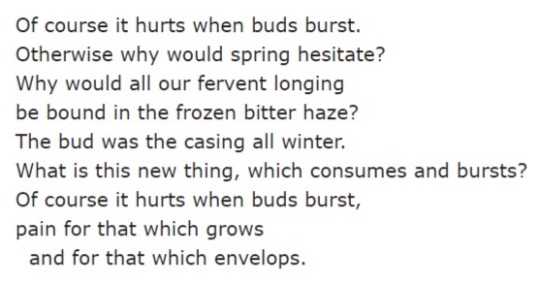



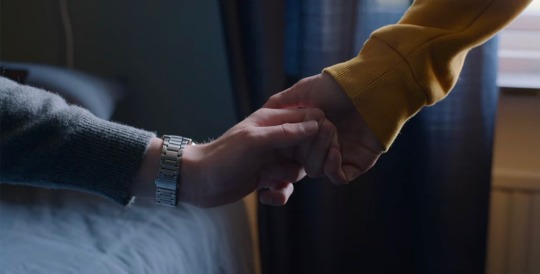




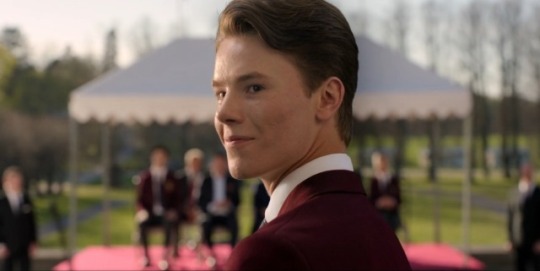

Young Royals (2021-) // Of Course It Hurts - poem by Karin Boye (trans. Jenny Nunn) // Announcement / Desert Scene / Eden - watercolors by Karin Boye
#prince wilhelm#simon eriksson#wilmon#prince wilhelm analysis#young royals#young royals analysis#karin boye#ja visst gör det ont#yes of course it hurts#scandinavian literature canon
67 notes
·
View notes
Text
Musing, rambling, essay, headcanons on misc Silm stuff
Arkenstone origin
Elladan and Elrohir
The interconectedness of redemption and part 2: inverse
Very small Elrond HC (HC is small, not Elrond)
Brothers, brothers everywhere Part 2 Feelings!
Brothers 3: why it's good to be the younger one
Sauna!
I wish we saw a solid redemption arc.
We need more stupid / evil / wrong women. (2 Feanorian wives HC)
What key was the Music in (yes, it’s a pointless question but anyway)
Ranting about 2nd person fics
More Elrond: what’s his hobby?
of Laws and Customs of the Eldar, but the interesting parts, not the marriage-related parts (ghosts!!!)
Who counts as a Silm character? (Do we?)
How are Orcs made? (in more than one way)
Tuor (and Maeglin!) - Turin paralells
Eol:Maeglin ?=? Morgoth:people
5 and 15 as unlucky numbers
re: Asks about Maeglin
another ask on Maeglin
re: Why I don't think Silm elves have canonically big ears
What hapenned between Finrod and Petty Dwarves?
random list of characters falling from a height
Finrod's flaws (not many, and not large)
Anthropomorphic artifacts (the right way for a musical)
sad thing about Elrond
sad thought about Finarfin
the Vanyar (are not perfect)
How I imagine Elu Thingol's personality and reasons for doing things
Tolkien's hard metaphysics worldbuilding (and why Luthien is not a Mary Sue)
Another "how to fit Celegorm in B&L better" but this time he's still evil
Silmarils, grief and hope.
Consequences, neccessary evil (is not a thing) and unearned suffering
Lord of the Rings as a reprise of the Silmarillion
The Scandinavian Sindar (or more like: Scandinavian children literature)
Re: ask How Morgoth made dragons?
Finwë and Miriel (but the other one): their breaking of gender stereotypes for plot
Erestor could be half-elven, that's how
Annatar, Celebrimbor and what would they talk about
Afterlife thoughts: the creepy edition
The Eagles - what are they (re: ask)
What would happen if Turgon didn't kill Eöl?
2 notes
·
View notes
Text
NATO has to put an in-house resident writer or author (textbook/Scandinavian language/English literature/history/law connected/art studies/science- physics, astrology, astrophysics, cosmology, IT, computer science, engineering,English speaking).To write books and anything mental stimulating that I download online for free. He has to make templates on how to write formal formal English & American literature. He can sell his books outside but there’s a limit. Not more than 1M dollars per month. He has a basic salary of $2,600 monthly. Free Health perks. Overwhelming food. Free clothing allowance and free legal assistance and basic workers rights under Philippine laws. New Vatican state adheres to Philippine laws on employment when there’s no conflict. Example: 13th or 14th month pay in December. SSS benefits. Etc. Must be British or American or Filipino (Riano style of book writing for law connected & Philippine history) or - easy to read & understand Catholic canon law - Catholic history- liturgy - basic teachings- anything Catholic connected (Norbertines/Benedictine/Franciscans/Birgittines/Piarists tradition)
0 notes
Text
Saints&Reading: Friday, February 24, 2024
february 10_february 4
PRINCESS ANNA OF NOVGOROD (1050)

The reign of Yaroslav the Wise and Irina was the highest period of Kievan Rus. Yaroslav laid out plans to set up Kiev, his capital, as “a city of God,” an earthly reflection of the Heavenly Jerusalem (Rev. 2:10). The Church of Holy Sophia became the center of Kiev. The entrance into this city of God’s Wisdom was through the Golden Gates, upon which a Church was built and dedicated to the Annunciation. Those who had recently been pagans now deeply venerated the All-holy Virgin, seeing her as the temple of God’s wisdom. Because of this, the feast day of The Cathedral of Holy Sophia in Kiev was the Nativity of the Theotokos.1
In 1046, when the Greek princess Anna married Vsevolod, the son of Irina and Yaroslav, she brought with her to Kiev the icon of the Theotokos known as Οδηγήτρια (Directress) as a blessing from the Most-holy Theotokos to the Russian state. The words of the Akathist to the Theotokos show the spiritual meaning of this icon for Christian Rus’: “Rejoice, unshaken wall of the Kingdom.” Later on, this icon started to be called the “Smolensk Icon of the Theotokos.”
In 1051, Venerable Anthony of the Caves came from Mt. Athos to Kiev to found the Kiev Caves Lavra. Through him, the Mother of God blessed Kiev as her third earthly garden.2
Yaroslav the Wise strived to make Rus’ an organic part of worldwide Christendom. Churches were built throughout the Russian land. Greek singers began to teach the Russians Orthodox church music. It was during Yaroslav’s reign that the first Russian legal code, the “Russkaya Pravda,” was compiled and The Rudder, the book of Byzantine canon law, was translated. Yaroslav gathered books and manuscripts and had them translated from Greek into Slavonic. In order to spread literacy among the people, he asked the clergy to educate the children and he built a school in Novgorod.
Within a very short period, the Kievan scribes had mastered the great literary riches of Byzantium. They also mastered the standard models of the Byzantine art of architecture and painting. No less important for the destiny of Rus’ was the inheritance left behind by Sts. Cyril and Methodios. “Now, the Slavic tribes shall fly,” said St. Cyril, prophetically pointing to the growth in importance of the Slavic peoples. From out of Bulgaria, which had a rich collection of Christian literature, Rus’ received an enormous collection of books. Most importantly, they received liturgical books in a language that was close and understandable to them.3
The Grand Prince often had to travel on long campaigns and trips, during which time Irina stayed behind in Kiev, running his affairs.4
Already during Irina’s lifetime, she was praised for her virtue and piety. St. Hilarion, Metropolitan of Kiev (†1053, commemorated on October 21), who wrote the famous “Homily on Law and Grace,” wrote about her to St. Vladimir the Baptizer of Russia (†1015, commemorated on July 15), who had already reposed. “Look upon your daughter-in-law Irina! Look on your grandchildren and great-grandchildren! Look at how they live, how God preserves them, how they keep the faith that you gave them, and how they praise the name of Christ!”
Irina gave birth to seven sons and three daughters. Her sons are especially noteworthy: the Holy Right-believing Prince Vladimir of Novgorod (†1042, commemorated on October 4), Grand Prince Izyaslav of Kiev, Sviatoslav of Chernigov, and Vsevolod of Pereyaslavets (the father of Vladimir Monomakh).
Irina’s daughters, like their father, mother, and brothers, were raised in an atmosphere of literacy. An ancient chronicler relates that Yaroslav “sowed the words of books” in the hearts of the people close to him. The Grand Princess taught her children her native language and they understood well all the Scandinavian sagas, which Varangian5 soldiers sang in the courtyard of the prince. The daughters of Irina and Yaroslav became queens: Anna became queen of France, Maria became queen of Hungary, and Elizabeth became queen of Norway...continue reading
St GALINA (3rd.c.)

During the persecution against Christians in the third century, a certain pious woman named Rufina fled from Corinth to a mountain to escape from her pursuers. There she gave birth to a son, Quadratus, and died soon afterward. By the Providence of God, the infant remained alive and was nourished in a miraculous manner: a cloud appeared over him, dropping a sweet dew into his mouth.
The childhood and youth of St. Quadratus were spent in the wilderness. When he was a young man, he met some Christians, who enlightened him with the light of the true Faith. Quadratus studied grammar, and later learned the physician’s art and attained great success in it. But most of all, Quadratus loved the solitude of the wilderness, and he spent the greater part of his time in the hills, in prayer and meditation of God. Many years passed, and his friends and followers frequently visited the saint to hear his teachings. Among them were Cyprian, Dionysius, Anectus, Paul, Crescens and others.
By order of Emperor Decius, a military prefect named Jason arrived at Corinth to torture and slay Christians. Since Quadratus was the eldest, he spoke for the rest. The saint bravely defended his faith in Christ the Savior, then the torture began. St. Quadratus, despite inhuman suffering, encouraged the others, urging them not to be afraid and to stand firmly for the Faith.
Unable to persuade any of them to deny Christ, Jason ordered the martyrs to be thrown to wild beasts to be torn apart, but the beasts did not touch them. They tied the saints to chariots by their feet and drug them through the city, with many of the crowd throwing stones at them. Finally, they condemned the martyrs to beheading by the sword. At the place of execution, the martyrs asked for time to pray, and then one after the other bent their necks beneath the sword.
Imitating the men, many holy women – including St. Galina – also went voluntarily to suffer for Christ.
Source: Antiochian Orthodox Christian Diocese


2 PETER 1:1-10
1 Simon Peter, a bondservant and apostle of Jesus Christ,To those who have obtained like precious faith with us by the righteousness of our God and Savior Jesus Christ: 2 Grace and peace be multiplied to you in the knowledge of God and of Jesus our Lord, 3 as His divine power has given to us all things that pertain to life and godliness, through the knowledge of Him who called us by glory and virtue, 4 by which have been given to us exceedingly great and precious promises, that through these you may be partakers of the divine nature, having escaped the corruption that is in the world through lust. 5 But also for this very reason, giving all diligence, add to your faith virtue, to virtue knowledge, 6 to knowledge self-control, to self-control perseverance, to perseverance godliness, 7 to godliness brotherly kindness, and to brotherly kindness love. 8 For if these things are yours and abound, you will be neither barren nor unfruitful in the knowledge of our Lord Jesus Christ. 9 For he who lacks these things is shortsighted, even to blindness, and has forgotten that he was cleansed from his old sins. 10 Therefore, brethren, be even more diligent to make your call and election sure, for if you do these things you will never stumble;
MARK 13:1-8
1 Then as He went out of the temple, one of His disciples said to Him, "Teacher, see what manner of stones and what buildings are here!" 2 And Jesus answered and said to him, "Do you see these great buildings? Not one stone shall be left upon another, that shall not be thrown down." 3 Now as He sat on the Mount of Olives opposite the temple, Peter, James, John, and Andrew asked Him privately, 4 Tell us, when will these things be? And what will be the sign when all these things will be fulfilled? 5 And Jesus, answering them, began to say: "Take heed that no one deceives you. 6 For many will come in My name, saying, 'I am He,' and will deceive many. 7 But when you hear of wars and rumors of wars, do not be troubled; for such things must happen, but the end is not yet. 8 For nation will rise against nation, and kingdom against kingdom. And there will be earthquakes in various places, and there will be famines and troubles. These are the beginnings of sorrows.
#orthodoxy#orthodoxchristianity#easternorthodoxchurch#originofchristianity#spirituality#holyscriptures#gospel#bible#wisdom#saints
0 notes
Note
ANNA!!! YOU TALENTED, SNEAKY ARTIST!!!
1. Please tell me what your favourite vibes are; as in a mood, an aesthetic, a weather or a climate, etc.
2. A country you've always wanted to explore from one end to another, other than your home country!
3. Do you have a favourite routine that you follow while drawing or writing? Like music, ambient noise, lighting, etc?
4. That one favourite food you ABSOLUTELY cannot give up!
5. A ship, other than Aruani, that makes you squeal and kick your feet (or just happy in general!!)
:3
Moon, hi! 🖤
Thank you so much for asking!
1. All these gloomy, rainy vibes, I love autumn. I also love mid-spring, April-the first half of May.
Do I even need to mention the "vintage/retro" aesthetic? xD
2. Hm, it's Scandinavian countries: Norway, Sweden, Iceland. And also I have a huge interest in the Middle East and Asia in general, and it's honestly difficult to pick one country there because the regions are extremely interesting and so culturally rich.
3. Oh, when I draw, I usually listen/watch on my laptop different lectures in literature, history, art, so it's like studying and drawing session 2 in 1 :D And I do little breaks listening to music~
As for writing, I honestly need music to write, for the mood, for the "right" emotions and feelings, so I always write with music.
Bonus for writing and drawing: nice coffee, but it's more like an option, other than obligation, heh.
4. Oh my... Listen, you definitely made me think about this, and I just realised I can't name the food right away... Hm... But I guess, there are various foods I adore, and one of them, let's say, it's syrnyky - it's a Ukrainian dish, from cottage cheese. I just adore it for breakfast with some coffee T__T
5. To be honest, AruAni is my all too ship and no other ship can beat them, honestly, and no other ship makes me feel THAT happy. I love these two so much it's insane... BUT! I have ships that I adore too, and it's PokoPiku, JeanPiku, YumiHisu, if AoT. Lol, I can't explain but something about potential ReiConnie post-canon makes me also giggle (in a good way). I just don't know where it came from, but something about it is adorable.
1 note
·
View note
Text
reading experiment #0
before starting the experiment in which i try to overcome my reading block, i want to reflect on my relationship with books and reading.
i've always loved reading and would spend a lot of time with that. i think its safe to say that it was, at least partially an act of escapism, but lets not get into that right now. i was more of an intensive than an extensive reader, meaning i oftentimes reread the same books or stayed within certain series or genres, rather than reading everything. as life got more stressfull and i grew more depressed, i stopped this reading habit, but for some reason still decided to study literature in both my BAs (anglophone and scandinavian literature fyi). So during my bachelors i still read a lot but usually only what i was assigned. as i know many other literary scholars do, i struggled with reading for enjoyment, but i suppose reading for my studies still kept me in practice.
since i started my masters and moved, i have been a lot busier. i have 1 1/2 student jobs, do volunteer work and somehow have to find time to run a household and occasionally work out. i have started to neglect even the assigned reading, and lost all passion for literature. as i mentioned above, this definitely has something to do with depression.
but i feel really bad for my lack of reading. mainly because i like to think of myself as a person who reads. i want that intellectual vibe, that cultural capital, to keep up with the canon. furthermore, i think by reading again, i could potentially train my attention span. furthermore, i would like to spend more time offline.
heres the idea for this project: im gonna put 25 minutes (the length of one pomodoro cycle) aside everyday for reading. i will give a short update here on how everything went. to start off, i will set this challenge for two weeks.
to reignite the reading spark i will start within my reading bubble, going back to books i have already read, hoping they will eventually lead me to other, new books.
newspapers/magazines and comics are included in my definition. in order to achieve the offline-goal, ebooks only count when read with my ebook reader.
0 notes
Text
Yes, of course it hurts when buds burst
– Wilhelm in the light of Karin Boye
In the second season, Wille and Simon work together on a group project about the book Kris "Crisis" by Karin Boye. The book's plot has obvious parallels to Simon and Wille's story, allowing them to reflect on their own relationship through their discussion of the book. I wonder whether including a work by Karin Boye may serve another purpose in the series as well.
In Norway where I'm from, and I think in Sweden as well, Karin Boye's name is inextricably linked to her most well-known poem Ja visst gör det ont när knoppar brister "Yes, of course it hurts when buds burst". The title/first line of this poem is particularly famous and is frequently referenced. In fact, whenever I hear or think of Karin Boye, this line automatically pops into my head, and I don't think I'm alone in that. As it happens, this poem may also serve as a beautiful metaphor for Wille's journey in the series.
Here is the full poem, first in the original Swedish version, then in an English translation slightly adapted from Jenny Nunn's translation:
Ja visst gör det ont när knoppar brister.
Varför skulle annars våren tveka?
Varför skulle all vår heta längtan
bindas i det frusna bitterbleka?
Höljet var ju knoppen hela vintern.
Vad är det för nytt, som tär och spränger?
Ja visst gör det ont när knoppar brister,
ont för det som växer
och det som stänger.
Ja nog är det svårt när droppar faller.
Skälvande av ängslan tungt de hänger,
klamrar sig vid kvisten, sväller, glider –
tyngden drar dem neråt, hur de klänger.
Svårt att vara oviss, rädd och delad,
svårt att känna djupet dra och kalla,
ändå sitta kvar och bara darra -
svårt att vilja stanna
och vilja falla.
Då, när det är värst och inget hjälper,
brister som i jubel trädets knoppar.
Då, när ingen rädsla längre håller,
faller i ett glitter kvistens droppar .
glömmer att de skrämdes av det nya,
glömmer att de ängslades för färden –
känner en sekund sin största trygghet,
vilar i den tillit som skapar världen.
Yes, of course it hurts when buds burst.
Otherwise why would spring hesitate?
Why would all our fervent longing
be bound in the frozen bitter haze?
The bud was the casing all winter.
What is this new thing, which consumes and bursts?
Yes, of course it hurts when buds burst,
pain for that which grows
and for that which envelops.
Yes, it is surely hard when drops fall.
Trembling with fear they hang heavy,
clammer on the branch, swell and slide -
the weight pulls them down, how they cling.
Hard to be uncertain, afraid and divided,
hard to feel the deep pulling and calling,
yet sit there and just quiver –
hard to want to stay
and to want to fall.
Then, at the point of agony when all is beyond help,
the tree's buds burst as if in jubilation,
then, when no fear holds them back any longer,
the branch's drops tumble in a shimmer,
forgetting that they were afraid of the new,
forgetting that they were fearful of the journey –
feeling for a second their greatest security,
resting in the trust
that creates the world.
In the series, we see how Wille goes from letting his family dictate his life, to realising what agency he does have, and finding his own voice and path. We see him going from trying to conform to what is expected of someone in his role, to prioritising himself and Simon and their love. We see him going from struggling with whether he as a crown prince can be openly queer, to coming out very publicly.
Karin Boye's poem reminds us of why Wille couldn't free himself from the expectations of him as crown prince and come out earlier: because the growth he goes through hurts so damn much. Even spring hesitates. How can we fault Wille for doing the same?
However, Boye's poem also provides us with hope. They start the group project on her book in episode three of season two, a very painful episode where Wille sinks into the depths of hopelessness and despair. It is as though the reference to Boye's poem which for me at least is implied here, tries to reassure us and Wille that everything will be alright. No matter how long spring hesitates, it will always arrive at last. The painful events of this episode is a catalyst for Wille and Simon's journey back to each other again, for Wille finding his voice and forging his own path. And we know that when no fear holds them back any longer, the drops will fall and spring will arrive at last. This moment comes during Wille's speech at the very end of the season, where he says: Jag är också rädd. Men jag tänker sluta med det nu. "I'm also scared. But that ends now." Immediately afterwards, he owns up to being in the video with Simon, thereby publicly coming out as queer and freeing himself from what has been expected of him as crown prince. The he turns and smiles at Simon, who smiles back. The buds have burst as in jubilation.
Whether the writers intend to evoke this poem or not, it perfectly encapsulates the enormous growth Wille goes through during these first two seasons. The growing process is incredibly painful, but it is what ultimately allows Wille to blossom and turn into a truer, better version of himself, letting everyone see the colours he has previously kept hidden inside himself. I can't wait to see Wille blossom in season three!
#crown prince wilhelm#prince wilhelm analysis#simon eriksson#wilmon#growing pains and blossoming#coming out#forging your own path#young royals#young royals analysis#karin boye#ja visst gör det ondt#scandinavian literature canon#thoughts overflowing my fixated mind
40 notes
·
View notes
Text
My least favourite argument in the whole “classic literature” discourse is the whole “the classics you read in uni are always the ones written by straight white men and literature by women, poc or lgbt authors are NEVER promoted” because in a good university it’s straight up not true. The straight, white men written stuff is the foundation that you will read in your first and second semesters to get a foundation. You will work from that over the course of your studies and go further in depth about the problems and discussions to be had and in that context you WILL also read a lot of literature and academics texts by women, poc and lgbt authors, like the whole point of university is that you find your subject and then, y’know... STUDY it and while studying you will inevitably find voices pro and contra the concepts that’s been established, like that’s literally the whole point
#i'm just so fucking tired of this whole argument sorry not sorry#americans who want to tell me that their education system sucks dni#also because we're talking literally only about the english literature canon... you people have the most inclusive literature canon overall#because the english literature canon includes everything ever written#as opposed to the german or scandinavian literature canon that are defined by specific books and leave out most belletristik
2 notes
·
View notes
Text
Origin of the Folkloric Sandman (with sources)
Earlier today someone asked me if The Sandman originated with the Charlottes song. Buckle up. You’re in for a long ride...
The idea of The Sandman originates from European folklore. It may actually be an evolution of the idea of Morpheus and the other Oneiroi in Greco-Roman mythology.
in Greek mythology there were these beings known as the Oneiroi which meant Dreams. They were supposed to have black wings. Oneiros directly means Dream. The Romans named three of them. Phobetor (Terrifier, as their preference was making Nightmares) though he was sometimes called by a more friendly name of Icalus (Not to be confused with Icarus), Morpheus (Shaper, whose dreams were usually metaphorically or literally true), and Phantasmos (Fantasy). Their names can be found in Metamorphoses by Ovid.

Phobetor AKA Icalus, the Nightmare making Oneiros, may have been the basis for Nightmare, Marvel’s equivalent character to Dream AKA Morpheus from Neil Gaiman’s The Sandman for DC Comics (though in comics Nightmare came first).

Over the years, in society’s collective consciousness, only Morpheus was really remembered. And the modern idea of him is he creates both dreams and Nightmares.

The gates of horn and ivory in the realm of dreams, which are also mentioned in Neil Gaiman’s The Sandman, were mentioned in Homer's The Odyssey. The Gates of Horn admit true dreams, the gates of ivory admit the deceptive dreams.
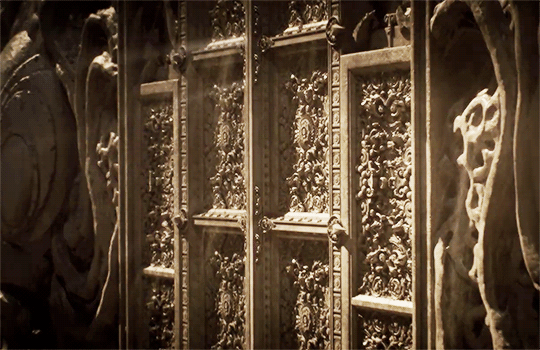
In 1841 Hans Christian Andersen published a story called Ole Lukøje (meaning close-eye) about a strange man who would sprinkle "Sweet milk" in your eyes to induce sleep and dreams. In the story Ole Lukøje tells us he is the Roman God of Dreams, making it clear he is also Morpheus (as around this time his fellow Oneiroi were mostly forgotten by pop culture). Later translations changed the sweet milk to sand. This is the most common version of The Sandman. Ole Lukøje also had a sibling, Death, who looked a lot like him. As Death can easily be mistaken as Sleep and Sleep can be mistaken as Death. In the original Roman mythology though, Death was actually Morpheus's uncle, not sibling. However just like with Neil Gaiman’s The Sandman, his mother is Night personified (Nyx).

The idea that he sprinkles sand in your eyes to make you sleep and dream originates with Scandinavian folklore and may also connect to Morpheus of Roman mythology as he was a ‘shaper” or sculptor and sand, when wet, can be very clay-like, for sculpting.
The Scandinavian / Eastern European lore eventually made it’s way to Central and Western Europe where it easily merged with Morpheus.
The Sandman has become so merged with the mythological Morpheus that the TV show Once upon a Time made “sands of Morpheus” a plot device for Season 6.
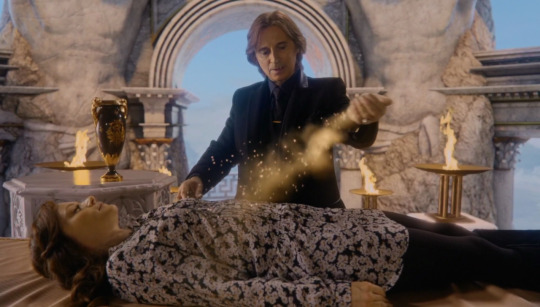
There is a more obscure Sandman legend that turns up in a nineteenth century short story called Der Sandmann (The Sandman), a nurse tells a small child.In this version that The Sandman sprinkles sand in the eyes of children who don't sleep to make their eyes fall out and then he eats the eyes. This was clearly the nanny twisting the benign "I'll make you sleep" Sandman to scare the child into going to bed. And might be where Neil got the idea for the Nightmare creature The Corinthian, who has a taste for human eyes.

In the nineteenth century a land that you go to when you dream became very popular in children’s literature. Often called the Land of Nod (which is the name of the place Cain fled to in the Cain and Abel story) it has also been called Slumberland (Nemo’s adventures in Slumberland) or the Dream-Time or The Dreaming (from Indigenous Australian lore).
The Animated series The Real Ghostbusters (based on the Ghostbusters movie) considered The Sandmen (there are apparently multiple) to be a "Class 6" apparition which I think was a mislabeling as in show canon, Class 6 is animal-like. He'd be class 7 or higher.
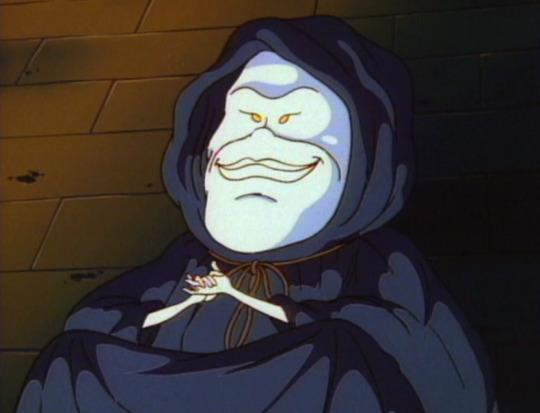
There's also a version of The Sandman in the animated movie Rise of the Guardians and he uses a very obscure part of Morpheus mythology. According to some sources Morpheus cannot or will not speak in the waking World. So Sandy in Rise of the Guardians is mute.

I think Neil Gaiman may have almost went with that lore, that Morpheus won't or can't speak in the waking world, but had changed his mind by issue 3.

In any event his speaking is at least partly telepathic for The Sandman AKA Dream AKA Morpheus in The Sandman comics by Neil Gaiman. That's why everyone hears their own native language when he talks.

Pitch, the villain of Rise of the Guardians, may have also been physically modeled on Morpheus from Neil Gaiman’s The Sandman.

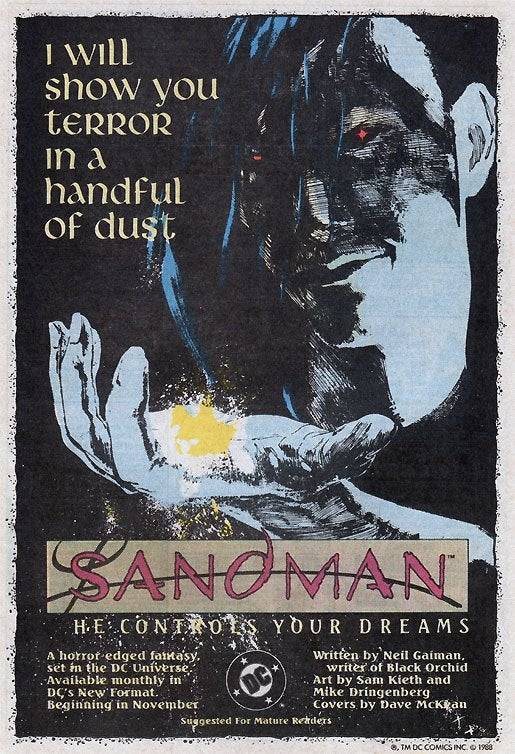
43 notes
·
View notes
Note
I’m going to keep this post Anon because of the amount of hate I got previously. I use to write fanfics but because I didn’t pair the following: Wolfstar, Drarry, Linny, Jegulus, Scorbus, and Snarry I’m apparently homophonic. Even though none of those ships are canon and I stated I like canon pairings on my page. I stopped writing for almost over a year and a half now because when I defended myself I got more and more hate and negative comments. I did have representation of LGBQT in my stories but because I’m not pairing the above I’m labeled as a homophobe. If I made a gay character straight for example Dumbledore, yes they could call me a homophobe, but I didn’t. This one reviewer said it was ok to turn straight people gay and but it wasn’t ok to turn gay people straight (which I never did in my stories), and I should have at least 40-50% of LGBQT representation in my story. I just got frustrated because there was no winning with these guys so I deleted all my stories for good. Honestly, fandom and TikTok has ruined HP for me.
I'm so sorry this happened to you. This is absolutely awful and honestly, the way the people who claim to care about the issues of the LGBTQ+ community in this fandom just carelessly throw around such accusations is disgusting and detrimental to the cause they preach to defend.
Writing straight characters as straight definitely doesn't make you a homophobe.
It's also interesting that, apparently, it's so important for these people to write no-sense against canon pairings just because they are homosexual that it's better than writing about healthy relationships. And let's remember how a great part of these pairings comes with the bashing of female characters. But as usual, misogyny is the last thing people care about.
I personally headcanon Albus as gay because I think it's hilarious that the only child of Harry and Ginny that is named after a Slytherin and a gay man is the one everybody decided is in Slytherin and gay. But I don't ship him with Scorpius. And you are not obliged to write Albus as a Slytherin or gay.
The only thing you need to worry about is if the character who is offering the point of view for the story knows about the sexualities of an enough large number of characters that it would be unrealistic to not have a certain percentage of characters who belong to the LGBTQ+ community (which is definitely not the 40%). Honestly, even in the original series, the only characters Harry had any business knowing the sexuality of are himself, Ron, Hermione, and Ginny. It's not unrealistic for four characters to be straight. There certainly wasn't an agenda on the author's part about having that kind of representation in her story (and the social and historical context in which the books were published should be taken into consideration here) but there's nothing unrealistic about the lack of openly gay characters (I do still think she could've hinted at the Dumbledore/Grindelwald business in DH).
And mind you, I say this as someone who once wrote a book where the main character was the only straight person in her family.
Personally, I am a firm believer in buying, reading and discussing books that have actual representation instead of trying to change already well-established characters, because you are always going to mess up. Case in point: Tonks is a surrogate for Remus and Sirius, because apparently, Teddy Lupin needs to exist, even without his mother.
The majority of the books I read don't have romance, they are mostly obscure pieces of Scandinavian crime literature, but in the series Red Queen my favourite character is bisexual and my favourite ship is an f|f one (and the bisexual character is not part of the ship just to clarify). And all that stuff is canon. Because I've actually read other things besides Harry Potter in my life.
I'm really sorry about what happened to you. I hope you keep writing, because it's a beautiful, even if at times frustrating, art. Regardless of if that writing is original or fanfiction. Regardless of if you'll go back to publishing it or you'll keep it to yourself. That book I was talking to you about? It took me six years to write it, I'm the only one who has ever read it but I had the best time writing it and it was a beloved companion throughout most of my teenagehood.
15 notes
·
View notes
Note
Follow up questions because I’m a Nerd and I love learning: is there any evidence to suggest frequent inclusion of women in Scandinavian warfare? Or is finding something like women’s armor rare? Was there a standard definition of any queer terminology in any ancient civilization? Did any Norse culture ever find its way to the Middle East???
I feel a bit like an over eager student writing this but uh...I’m very curious. 👀👀
When talking about women in Scandinavia you run into people describing how it appeared these women would take on the role of men in the absence of men. But I think there is an issue in that we’re assuming the role of women in these societies would match the role of an Ancient Greek woman (which is a whole other thing but I digress)
They’ve found that some of the founding fathers of Iceland were women, thirteen of them to be exact. women could inherit land and money from their parents. Women could be involved in legal matters and hold official positions.
There is lots of evidence that women were very frequently going raiding. They have been debating recently I believe if the term dregnr a young warrior really was only applied to men. Young women were described in the same vulgar terms as dominators and something we discuss in ancient Rome was the ideal of male “hardness” basically just being the top dog in the room. Women were the same in Ancient cultures if not expected to hold themselves differently but Skalds (the poets) describe the women just like the men.
Another thing quite recently (1993 so really recent in terms of historical archives) is the idea of the surrogate son. Basically, if a man died with no son to inherit a surrogate son would be chosen over a daughter. It has recently been noted that they very well could have been describing the daughter as a surrogate son. Someone to take up that male role of head of the household. This suggests in the sagas we have noted women but there is also a possibility for women to be described with male traditional words because of the role they were playing.
And we have found tons of armor that looks ceremonially and some battle worn for women yep. All women could fight though it was excepted they could defend themselves and their home front. Against potential attackers and wild animals.
Plus in the 13th century, the Christians introduced the Law of Gulathing which were sets of rules for people to follow. Women were then banned from cutting their hair like men, dressing like men, or in general behaving like men. This suggests It was common enough for them to throw it in the laws that banned traditional things that Scandinavians did that did not fit the Christian narrative or way of life.
-- This is gonna go under the cut for the rest cause wow I got long lol.
Okay queer terminology. You’ll see lesbian which was women who fucks women. and you’ll see penetrator a lot. These were slave cultures also so the idea of sleeping with another citizen was defiling them you shouldn’t do it.
In Ancient Athens, you saw men preferred the company of men over women because they didn’t think women were of value they were only good for producing heirs. There was a thing called pederasty where a wealthy man in his 20s, the erastes, would court a young wealthy man from the ages of 13-19, the eromenos, and teach him and keep him as a lover. Their debate over Achillies and Patroclus for example wasn’t if they were sleeping together but who was fucking who really. Because Patroclus was older but Achillies was the hero so was he being emasculated or were they breaking the age rule? That was their debate cause these things mattered to them
They were kinda the exception to the citizenship rule. The Spartans felt the pederastry was weird because it involved citizens but they were all in with the homo. Obviously, this was all very public and you’d be scorned if they thought you were being penetrated.
All in all, being penetrated was something women and slaves did and the last thing you wanted to be was a woman.
Another thing to consider was these cultures had a lot of problems with excess. So too much sex or food and in Rome you were a uh Cnidus? Idk I can only spell it in Greek which is staggeringly unhelpful but basically, you can’t control your urges. Based off that time someone tried to fuck a statue I think or something like that
The Norse had a similar word ergi which meant you had too much heterosexual sex actually, you were too promiscuous. In the 12th century we know in Iceland homosexual acts like sodomy were banned under Christian canon (Thanks Richard I of England) so there is that. Pre-Christian influence there seemed to be no stigma around this minus don’t force yourself on your friends that’s rude but slaves were fair game. (I wrote a paper on the weird stereotypes of Vikings being the sexual aggressors when the literature of the time suggests the Lotharingians were way way more likely to commit those acts. At least according to French who were besieged constantly by everyone all the time.)
níð was an insult for the ancient norse which basically you had displayed unmanliness. Or you liked to take it up the ass to be plain about it. (Ancient people were vulgar as shit the Romans were obsessed with sexual threats to the point where its just in common day-to-day speech.) Ragr was a term that meant you were unmanly which is much more severe and you could like legally kill someone for saying that up till the 13th century.
There is actually some debate that the concept of unmanly comes from making fun of the Germans. So like if you were Ancient Germanic or Ancient Brittania you were the savages of the day. Which is interesting when you consider the rhetoric those two countries put out. Like literally no one like the Germans or the Brits they thought they were filthy uncivilized and cowardly people.
Also fun from the 7th to 10th century in Norse culture there were these figurines called gold foil couples. In it a couple would be portrayed which was a way of proclaiming themselves married before the gods. It was a very religious practice for them. There are figurines depicting people of the same sex in the gold foil figurines.
Basically, we can thank Christianity for why we think the Vikings didn’t do homosexuality or homosexual acts. Because well they didn’t want them to starting in the 12th century again thanks Richard for having the worst break up with your boyfriend in the history of break ups.
And onto gender which if you know Loki from Marvel him being genderfluid is based entirely on mythology and is common in Norse writings. Okay so essentially we think of seiðr or magic as something women do. And they did too. But men did practice it. This was seen as a third gender in Norse culture, the seiðmaðr a man who practices magic. Hence Loki moving between the three as he’s a known magic-user. There was also this concept of gender mixing, biological men buried in traditionally female clothing. But there is no way for us to know if that is this third gender or potentially they were more excepting of what we would call transgender.
Because most of the writings we have come from the 13th century where Christianity really took over and just started making shit up. Like we have evidence they were trying to cover up things about Norse culture they didn’t like. So men who practiced seiðr were actually ergi and not a different gender, just an unmanly male.
So yeah lol these were acts they did so verbs can be found really easily. But we have mostly Icelandic stuff cause Christians they did fucked up shit
--
And the Vikings in the Middle East. They went all over. We have this assumption they were raiding whenever they went. Actually, the thing is they only raided northern Europe because they rightfully assumed those guys couldn’t fight back.
But they had trading agreements easily with the Greeks, Persians, and Abbassids mostly. There is a woman from Sweden who was buried with a ring that was inscribed with “For/To Allah”
The Arabs had the term Rusiyyah to describe the Vikings because they came so often. They noted that the Rusiyyah were not good at practicing hygiene but also describe their bodies as being “in perfect form” They liked a good ripped viking and I can appreciate that. They were like “they’re filthy but damn are those rusiyyah built”
Baghdad had the first real market place and they had paper from China so they were printing stuff into books which the Vikings found very interesting. There was so much international trade but the British and Germans who we mostly hear from now were so technologically unadvanced there was no way they could have participated with these other older cultures.
There is money found sometimes that was certainly viking in nature. They didn’t really have money like the Arabs at the time preferring to trade in goods. So they offered furs and silks along with weapons and slaves.
And it is possible that there was culture exchange as all cultures were being exchanged back then. We know some vikings converted to Islam as Arab writers commented that they missed pork dearly but were committed to the Path of Islam.
The Slavs or Rus (Russians) of the time were also annoyed with these viking raiders because their shit would get stolen and then sold to Arabia where they’d have to buy it back usually.
So yeah lots of trading going on. And many Vikings like I mentioned worked as bodyguards or mercenaries. We don’t know much of what the Vikings thought except that the writers in Arab noted they were very polite to their hosts if not aggressive with each other in a playful manner.
Lol you really let my nerd pop off here. I’d have to do more research into the Norse effect on the Middle East though cause I only know about the other way around off the top of my head here.
7 notes
·
View notes
Text
The Fae
Maybe I'll post something else too instead of just things like this. Not sure what though.I could start to post more horror related things since I’ve always loved that

A fairy is described as a mythical creature in European folklore, often described as metaphysical,supernatural, or preternatural.
The History
Stories of the Fae don't have one single origin but rather are a collection of beliefs. One theory about the origin is that they were cast as either demoted angles or demons in christian tradition. Pagen belief systems state that they are minor deities or spirits of the dead.
The earliest mentions of the Fae are in the writings of Gervase of Tilbury, a 12th century English scholar and canon lawyer. The Fae were also a common feature of Renaissance literature and Romantic art, becoming especially popular in the United Kingdom during the Victorian era.

Titania and Bottom Oil by Henry Fuseli^ The English fairy derives from Old French romance where a fairy was described as a woman skilled in magic, and who knew the power of words, stones and herbs.
The concept of fairy in the narrower sense is unique to English folklore but Scandinavian elves served as an influence. Mythologists have variously depicted fairies as; the unworthy dead, the children of the eve, an older race of humans, and fallen angels. Folklorists suggest that the Fae arose from earlier beliefs which lost currency with the advent of Christianity.

Cat among the Fairies by John Anster Christian Fitzgerald ^ Magical Creatures
The label of fairy can be used to describe any magical creature such as goblins or gnomes. Although it is usually associated with magical creatures that have human appearance and small stature. Fae of various kinds have been reported through the centuries ranging from incredibly tiny, like the popular Tikerbell, to the size of a child. It is also said that some smaller Fae could expand their figures to imitate humans.

Common Appearances
In Orkney, Fae were described as short, dressed in dark grey and sometimes seen in armour. In some folklore, Fae have green eyes while in others they can have whatever coloured eyes. In some they are also depicted as barefoot while in others they wear some kind of footwear. Common in Victorian folklore Fae flew by means of magic or on the backs of birds while modern illustrations often include butterfly like wings that they use to travel.
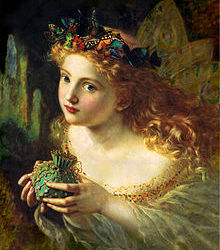
A portrait of a fairy by Sophie Gengembre^
Mischievous And Sometimes Dangerous
The Fae of the past were feared as dangerous and powerful beings that could be friendly but also incredibly mischievous. This belief attributed to the need to ward of the Fae using charms like church bells, four leaf clovers and food. Fae are also known to be vulnerable to silver and iron. Another belief is that if sugar or salt is placed in front of them they have to count every single grain. Fae can pull pranks like tangling the hair of sleepers, stealing small items and leading travellers astray. Although those are pretty lighthearted, more dangerous behaviours were attributed to Fae. A sudden form of death might have stemmed from Fae kidnapping after angering them and tuberculosis was also sometimes blamed on them.

The belief of a changeling was also common, which is when a newborn child is 'stolen' and replaced with what is believed to be a Fae baby. (This video explains changelings really well-https://www.youtube.com/watch?v=b22J3GaYL6k&t=821s-)

A child being stolen by a fairy^
A Few Rules Of Interacting With The Fae
Be polite and respectful. Do not purposely insult the Fae. Always bring honey. Do not carry iron on you. Do not say thank you. instead say 'i appreciate your act of kindness. Do not say sorry. Fae are masters of manipulation. Be weary when giving the Fae your name
'When the first baby laughed for the first time, its laugh broke into a thousand pieces, and they all went skipping about, and that was the beginning of fairies. ' ~ J. M. Barrie
#fae#fairy#fairie#fairies#folklore#european#european folklore#legends#legend#changeling#history#creepy#Victorian#victorian era#victorian folklore#the more u kno#supernatural#renaissance#renaissance art#goblin#a midsummer night's dream
167 notes
·
View notes
Text
fun while it lasted
In a recent piece for The New Republic, Tope Folarin argues autofiction is a designation limited to White authors; few authors of color are allowed into the category. I don’t disagree with that. But I wonder if authors of color aren’t given the autofiction designation because their work is actually lively in a way that the works of the autofiction writers of the 2010s are not. I think of 2010s autofiction as a product of dissatisfaction with the novel. It’s the form that would emerge in a culture in which there’s too much information for anyone to ever be certain of what’s going on in the world, and where we’re all so conscious of the details of others’ lives that few writers feel they can inhabit another life—especially if it differs from theirs in privilege or social position—with enough authority to create characters that will be believed and won’t be criticized. And so the novel—the realist novel with plot, entirely invented characters, themes, symbols—becomes an especially hard form to practice well.
I suppose the difference is whether you frontload that exhaustion with the form or not: whether your exhaustion with the form becomes an explicit part of your text or an explicit part of the way you describe your text in the interviews and publicity that surrounds your book. Rachel Cusk describes the structures of her earlier, more typical novels as “structures breaking down that I realized were old.” “[T]here’s a homogeneity afoot,” she noted in a 2018 New Yorker interview, “that I think everyone would accept in terms of our environment and how we live and how we communicate, and those things seem to be eroding the old idea of character”—character being a structure that dates from a “Victorian template” of the novel that is now obsolete. In My Struggle, Knausgaard often writes about how much he hates his world and everything in it. Their works seem products of this sense in our society that you can’t escape yourself—you can’t really be anyone but the traveling writer or “young urban artist” or Scandinavian dad that you are. And so there’s self-consciousness, doubt, even palpable exhaustion, in much of the autofiction written by authors who are White.
For writers of color, by contrast, their practice of the form of fiction seems vital. Books like Folarin’s A Particular Kind of Black Man or Akwaeke Emezi’s Freshwater are autobiographical novels; neither Folarin nor Emezi needs to tell you in or through the structures of their books that the form of the novel, or literature itself—any means of authentic artistic representation of experience—is exhausted.
In that sense, the fact that writers of color aren’t slotted into the autofiction category is probably a compliment to them. It seems to me writers of color—like Folarin, or Emezi, whom he mentions in his piece, or Raven Leilani, whose novel Luster also seems autobiographically inflected—don’t need to emphasize artifice in their practice of the novel form by presenting an altered version of their own lives. They simply inhabit the form.
What’s more, while Folarin raises a fair point when he notes that autofiction is a designation made by critics, rather than an artistic movement that various writers gravitated to organically, or a school of writing that various likeminded writers declared themselves part of—any category made by critics could reflect their biases, and those biases will come from the cultures the critics are part of—he also seems to treat “autofiction” as a positive and prestigious designation. I’m not sure it is, even among the critics. Cusk’s Outline series is probably the best reviewed of the lot; otherwise, it’s a polarizing label. Knausgaard’s My Struggle is as reviled as often as it’s liked. Heti’s Motherhood was criticized. The Topeka School was also greeted with ambivalence by some critics (though more because of a perceived imbalance in the novel’s critique of Trumpian and liberal/soft-left masculinities; Parul Segal notes Topeka is actually the least solipsistic of Ben Lerner’s novels). Generally, the amount of appreciation anyone has for an autofictional novel of the Cusk-Heti-Knausgaard-Lerner type seems to track with how sympathetic they are to the claim of exhaustion with the traditional novel form so often implied in these works.
But with, say, Emezi’s Freshwater, critics often noted the parallels between Emezi’s own experience and their protagonist’s, but the connection was generative, because there was something in Emezi’s experience of being an ogbanje—a spirit, in the Igbo tradition, born into a human body—that she wanted to convey through the medium of her novel; the book wasn’t just a sign proclaiming that all means to narrate any story but her own were exhausted.
As Lauren Oyler pointed out in The Baffler, autofiction was fun while it lasted. But exhausted self-consciousness, art that doubts its own capacity to be authentic, isn’t ultimately that exciting. It lands with a frisson—I honestly love a lot of the canonical autofiction books, the books written by Cusk, Knausgaard, Heti, Lerner; they speak to the nature of the exhausted, information-saturated moment in which they emerged; in that moment, they were engrossing—but it doesn’t leave much of a mark.
#literary#books#novels#autofiction#tope folarin#lauren oyler#rachel cusk#sheila heti#karl ove knausgaard#ben lerner#akwaeke emezi#raven leilani#parul segal#literary form
19 notes
·
View notes
Text
World’s Literature
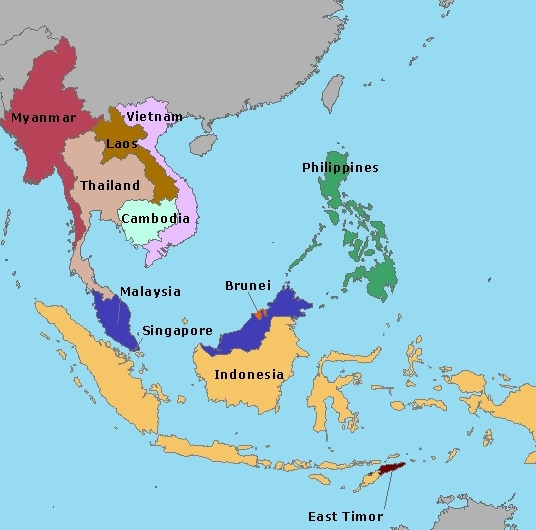
A. Southeast Asia
“All we have to decide is what to do with the time that is given us.” ― J.R.R. Tolkein
Southeast Asia is composed of eleven countries of impressive diversity in religion, culture and history: Brunei, Burma (Myanmar), Cambodia, Timor-Leste, Indonesia, Laos, Malaysia, the Philippines, Singapore, Thailand and Vietnam. Based on my research, the predominant themes of Southeast Asian arts have been religion and national history. In religion the main interest was not so much in actual doctrine but in the life and personality of the Buddha and the personalities and lives of the Hindu gods. In national history the interest was in the legendary heroes of the past, and this theme appeared only after the great empires had fallen and the memories of their glory and power remained. The Buddha image, which went through various stages of development, remained the favorite motif of sculpture and painting. The depiction of scenes from his previous lives in fresco and relief sculpture also had the purpose of teaching the Buddhist ethics to the people, as the Jatakas emphasized certain moral virtues of the Buddha in his previous lives; it also gave an opportunity to the artist to introduce local color by using, as background, scenes from his own contemporary time. The depiction of scenes from the Hindu epics also had the same purpose and gave the same opportunity to the artist. Many figures from the Buddhist and Hindu scriptures, such as gods and goddesses, heroes and princesses, hermits and magicians, demons and dragons, flying horses and winged maidens, became fused with similar native figures, and, gradually, folklore plots became merged in the general religious themes.

B. East Asia
“Only the very weak-minded refuse to be influenced by literature and poetry.” ― Cassandra Clare, Clockwork Angel
East Asia is the eastern region of Asia, which is defined in both geographical and ethno-cultural terms. The modern states of East Asia include China, Hong Kong, Japan, Macau, Mongolia, North Korea, South Korea, and Taiwan. According to my research, some of the themes in East Asia literature are Immortality, Unfaithfulness, Disrespect in the Society, Abused Marriages & Families, Religion, Traditional Practices, Traditional Beliefs and Social Class. Some of the books in East Asia were concerned of the ethical practices that were common in their society. Some of them are about “respect.” Respect is one of the most cherished virtues in the society, and many of the East Asian literatures have always expressed this in different ways, especially the need to respect the elderly and those in power. Another common theme that comes out of the books focuses on the abused marriages. In the two cases, we witness marriage partners engaging in abusive acts against their wives or husbands. There are so many books which possesses such styles and themes in literature.
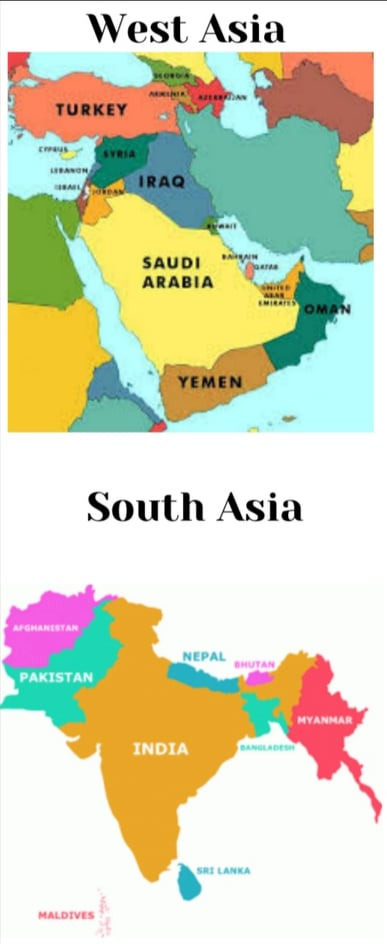
C. South and West Asia
“There is no surer foundation for a beautiful friendship than a mutual taste in literature.” ― P.G. Wodehouse
South Asia or Southern Asia is the southern region of Asia, which is defined in both geographical and ethno-cultural terms. The region consists of Afghanistan, Bangladesh, Bhutan, India, the Maldives, Nepal, Pakistan, and Sri Lanka. The West Asia region comprises of 12 member countries; Bahrain, Iraq, Jordan, Kuwait, Lebanon, Oman, State of Palestine, Qatar, Saudi Arabia, Syrian Arab Republic, United Arab Emirates and Yemen. Based on my research, the peoples of South Asia have had a continuous literature from the first appearance in the Punjab of a branch of the Indo-European-speaking peoples who also settled all of Europe and Iran. In India this branch of Indo-Aryans, as they are usually called, met earlier inhabitants with different languages and no doubt a different culture—possibly a culture akin to that of the Indus Valley civilization, which had a script, and perhaps a literature of its own, of which nothing is known. Certain to have been settled in India were peoples who spoke languages of Dravidian origin, as well as other languages, called Munda, now preserved only by aboriginal tribes, which show affinities with the languages of Southeast Asia. In the Hellenistic period literature and culture flourished in Western Asia. Traditional literary forms such as lists continued to be produced by the native population and were adapted by the new rulers. While there is little evidence for the creation of new narrative literature, which may in part be due to the fragmentary nature of our sources, existing epics, wisdom texts, and folktales were retold, rewritten, and transmitted. Greeks living in Western Asia created historiographical, ethnographical, and geographical works about their surroundings, inspiring in turn the Babylonian priest Berossus to write a reference work on Babylonia in Greek. Much as during the Persian Empire, political instability and changes in power led to a diverse and independent culture of writing. Continuity in all genres, writing systems, and languages remains the most important characteristic of Western Asian literature at least to the beginning of the Christian era.
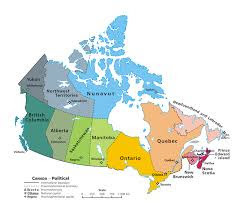
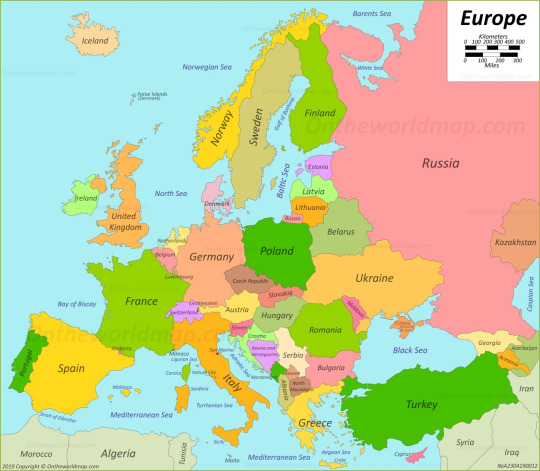
D. Anglo-America and Europe
“Literature is the most agreeable way of ignoring life.” ― Fernando Pessoa, The Book of Disquiet
Anglo-America most often refers to a region in the Americas in which English is a main language and British culture and the British Empire have had significant historical, ethnic, linguistic and cultural impact. Europe is a continent located entirely in the Northern Hemisphere and mostly in the Eastern Hemisphere. It comprises the westernmost part of Eurasia and is bordered by the Arctic Ocean to the north, the Atlantic Ocean to the west, the Mediterranean Sea to the south, and Asia to the east. Based on my research, like other national literatures, American literature was shaped by the history of the country that produced it. For almost a century and a half, America was merely a group of colonies scattered along the eastern seaboard of the North American continent—colonies from which a few hardy souls tentatively ventured westward. After a successful rebellion against the motherland, America became the United States, a nation. By the end of the 19th century this nation extended southward to the Gulf of Mexico, northward to the 49th parallel, and westward to the Pacific. By the end of the 19th century, too, it had taken its place among the powers of the world—its fortunes so interrelated with those of other nations that inevitably it became involved in two world wars and, following these conflicts, with the problems of Europe and East Asia. Meanwhile, the rise of science and industry, as well as changes in ways of thinking and feeling, wrought many modifications in people’s lives. All these factors in the development of the United States molded the literature of the country. Western European literature could be viewed as a parade of movements—Romanticism, Realism, Naturalism, Futurism, Structuralism, and so on indefinitely. European literature refers to the literature of Europe. European literature includes literature in many languages; among the most important of the modern written works are those in English, Spanish, French, Dutch, Polish, German, Italian, Modern Greek, Czech and Russian and works by the Scandinavians and Irish. Important classical and medieval traditions are those in Ancient Greek, Latin, Old Norse , Medieval French and the Italian Tuscan dialect of the renaissance. European literature, also known as Western literature, is the literature written in the context of Western culture in the languages of Europe, as several geographically or historically related languages. Diverse as they are, European literatures, like Indo-European languages, are parts of a common heritage belonging to a race of proud nations which boast the likes of Homer who wrote Iliad and Odyssey, Virgil who wrote the Aeneid, Dante who wrote Divine Comedy, Chaucer who wrote Canterbury Tales. These, and other literary masterpieces form part of what we call as Western Canon.
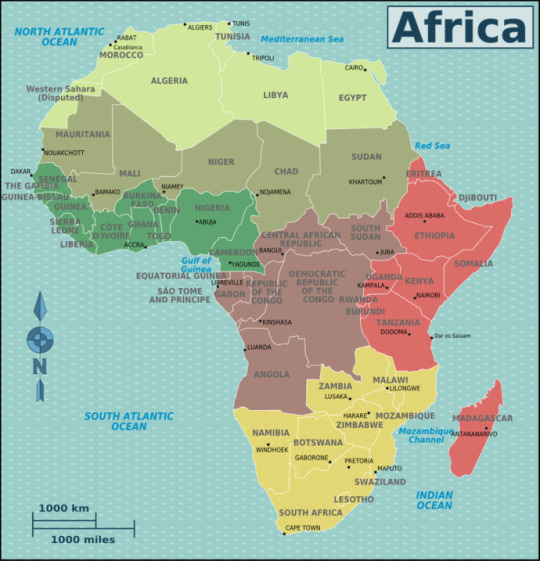
E. Africa
“Literature is a textually transmitted disease, normally contracted in childhood.” ― Jane Yolen
Africa is the world's second-largest and second-most populous continent, after Asia in both cases. At about 30.3 million km² including adjacent islands, it covers 6% of Earth's total surface area and 20% of its land area. With 1.3 billion people as of 2018, it accounts for about 16% of the world's human population. Based on my research about Africa’s Literature. Afro-Asiatic and African languages together with works written by Africans in European languages. Traditional written literature, which is limited to a smaller geographic area than is oral literature, is most characteristic of those sub-Saharan cultures that have participated in the cultures of the Mediterranean. In particular, there are written literatures in both Hausa and Arabic, created by the scholars of what is now northern Nigeria, and the Somali people have produced a traditional written literature. There are also works written in Geʿez (Ethiopic) and Amharic, two of the languages of Ethiopia, which is the one part of Africa where Christianity has been practiced long enough to be considered traditional. Works written in European languages date primarily from the 20th century onward. The literature of South Africa in English and Afrikaans is also covered in a separate article, South African literature.
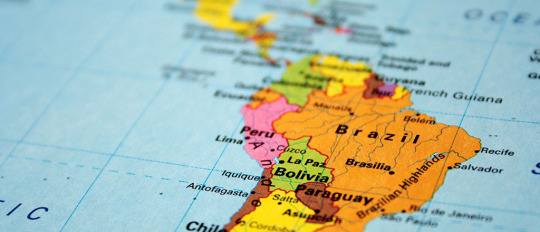
F. Latin America
“Literature is news that stays news.” ― Ezra Pound
Latin America is a group of countries and dependencies in the Western Hemisphere where Romance languages such as Spanish, Portuguese, and French are predominantly spoken. According to my research about Latin America’s Literature. Romanticism, Realism, Naturalism, and Emerging Literary Trends. The Latin American wars of Independence that occurred in the early nineteenth century in Latin America led to literary themes of identity, resistance, and human rights. Latin American literature, the national literatures of the Spanish-speaking countries of the Western Hemisphere. Historically, it also includes the literary expression of the highly developed American Indian civilizations conquered by the Spaniards. Over the years, Latin American literature has developed a rich and complex diversity of themes, forms, creative idioms, and styles. A concise survey of its development is provided here. For a history of literature written in Portuguese in Brazil, see Brazilian literature. Latin American literature refers to written and oral works created by authors in parts of North America, South America, and the Caribbean. Latin American authors usually write in Spanish, Portuguese, English, or a language native to their specific country. Latin American writers working in the United States can be classified as writing Latin American literature too. Latin American literature has a rich history starting in the Pre-Colombian period and working all the way up to modern day. With each period of Latin American history, came a genre that dominated the field. In this lesson, we will look at the main periods of Latin American literature, the genres that fueled those periods, and authors who are well known in Latin American literature.
Source:
Wikipedia, Britannica, Google and Online Library.
Saunar, Rhenz Rhyanne 11 - St. Alypius
7 notes
·
View notes
Note
thinking of getting into norse paganism, any specific way that i should go about it? love your blog
Hey Anon
Please accept my profuse apologies for how long this took me to answer. I often anguish about this question because most of our “best” online sources are riddled with misinformation, have underlying canals of fascism, or are the result of the most well-meaning people trying to say How Heathenry Be™. The latter is often when American practitioners try to teach their hearthcult’s interpretation or their personal interpretation of Heathenry as the canon without the transparency of saying “hey this is our interpretation and not the standard.”
Keep in mind that Heathenry has only a few unifying staples
Worship/Honor of figures from Norse mythology and based in Norse cosmology
Earth-centric and folkloric, meaning it’s based in direct experience and folklore rather than doctrine.
There’s no agreed-upon way to approach 1 and 2.
My advice is this
Start reading some Norse mythology, keeping in mind that we don’t treat them like biblical literalists treat their sources. The sagas are a snapshot of a moment in time during which Norse people were trying to reconcile their past as Pagans with their new faith in Jesus. They’re a little dense just because of the time they were written, but retellings of a lot of them do exist. Keep in mind you’re trying to get a feeling for these figures and their relationships with each other rather than picking out specific information. And the Norse LOVED metaphor. Nearly everything is a metaphor for something else, allowing complexity and depth to these stories.
Check out some articles and dissertations on Academia.com regarding concepts in Norse mythology. These are usually well-cited and written by scholars of either Norse history or of Scandinavian literature.
Read some Scandinavian Folktales and fairy tales, modern and classical. These are a more authentic depiction of Scandinavian folklore than say, fanciful interpretations of Vikings. My personal favorites are Jan Brett’s books and the Netflix show Hilda, and the folktale East of the Sun West of the Moon.
I am currently working on beginner pages for my website, but it’s taking some time since it’s a side side project to other pressing things on my plate rn. I also just found out I may need to move in the next few weeks so bear with me. Once there’s enough for people to read I’ll release them so they can be read while they’re still in progress.
💙 Fynn
#fynn speaks#forn sidr#heathenry#norse paganism#beginner heathen#beginner#where to start#resources#advice#Anonymous
150 notes
·
View notes
Text
WORLD LITERATURE

World literature is used to refer to a literature being circulated outside the country where it was published, and it’s pretty sure that everyone nowadays is very familiar with literature, because, who isn’t? People these days lives their daily lives with literature, surely, it surrounds our lives. Ever wonder if there’s an occurrence one day in our life, a day without literature? Will we able to live with it? Well, I don’t think so, after all, literature is our life. Now, before we go to the topic, lets have a brief introduction about when did the literature began.
The literature began early before 17th century, and ever since that time, it had a big impact from all over the world, it almost had taken up the whole world, a world of literature, indeed. And since the literature continues to expand, its dominant themes and styles of each literature around the world, expands, as well. And of course, up until today, there are still many more surprising notions about the literature all over the world!
Today, I’ll show you different dominant themes and styles of literature from Southeast Asia, East Asia, South and West Asia, Anglo-America and Europe, Africa, and Latin America. I hope that in the end, you’ll learn something new about the different themes and styles from around the world.
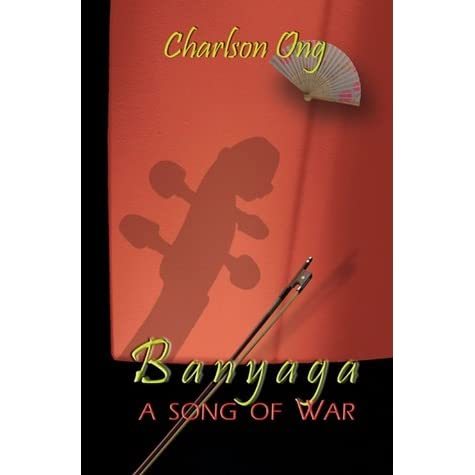
1. SOUTHEAST ASIA LITERATURE
Southeast Asia consists of 11 countries in total, these are Brunei, Cambodia, East Timor, Indonesia, Laos, Malaysia, Philippines, Singapore, Thailand, and Vietnam. All of these countries were colonized by the other countries, except Thailand, that’s why most of their literary works were mostly influenced by the countries who colonized them. Just like in the Philippines, The Philippines were colonized by the Spaniards, Japanese, and Americans; however most of the literature here in the Philippines were predominantly influenced by the Spaniards for they colonized the country for 333 years.
The Southeast Asian literature’s dominant theme are mainly diaspora (diasporic) theme. Diasporic theme focuses on stories outside the country where the writer is, it also talks about the experiences of an immigrant in a foreign country. Some example of a diasporic theme literature is “Banyaga: A song of War” by Charlson Ong, the story is about how Ernesto (protagonist) struggles living outside the country he came from, and fun fact, the author Charlson Ong’s relation with the main character is that they shared the same experiences! It’s like the author tells his very own life story in the presence of Ernesto as the character. “Banyaga: A Song of War” as well, portrays the Filipino culture, as the author being half Filipino.

2. East Asia Literature
East Asia consists of 8 countries in total, these are China, Japan, South Korea, North Korea, Taiwan, Hong Kong, Mongolia, and Macao. Without a doubt, East Asia is the most popular region in the whole world because of the countries it consists of. Mainly, the East Asia literature were mostly influenced by the Chinese writers; commonly, the China is the building block of the counties in the East Asia, on a fact that most of the East Asia country were colonized by the Chinese. With all of the 8 countries, the Chines and Japanese literature is the most prominent among the East Asia literature.
However, the Japanese literature has a different style, too. Their literature is mostly fond of ambiguous theme, wherein it has a deep meaning and sometimes, the reader wouldn’t get the meaning of it if you are from other countries or city in Japan. The Japanese literature is also well-known for its Haiku and Tanka poems.
Some example of the East Asia literature is Seol Gongchan-jeon (The Tale of Seol Gongchan), korean literature written by Chae Su, the novel was written during the early Joseon era and was originally written in classical Chinese text. The story of said novel is about a person being possessed by the dead spirit who tells story from the underworld. But, the said novel was banned during its era of publication.
Other example of the East Asia literature is a Tanka poem from the Japanese literature. Tanka poems are mostly commonly written as an expression of love and/or gratitude, it may, as well a self-reflection poem.
Narukami no sukoshi toyomite
(A faint clap of thunder)
sashi kumori
(Clouded skies)
Ame mo furanu ka?
(Perhaps rain comes)
Kimi wo todomemu
(If so, will you stay here with me?)
Narukami no sukoshi toyomite
(A faint clap of thunder)
furazu to mo
(Even if rain comes not)
warewa tomaramu
(I will stay here)
imoshi todomeba
(Together with you)
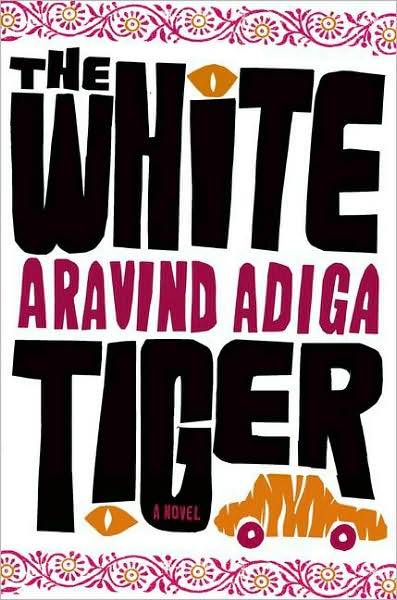
3. South and West Asia Literature
The South and West Asia consists of 17 countries, mostly the Middle East region, these countries are Armenia, Azerbaijan, Bahrain, Cyprus, Georgia, Iraq, Israel, Jordan, Kuwait, Lebanon, Oman, Qatar, Saudi Arabia, Syria, Turkey, United Arab Emirates, and Yemen. Apparently, the South and West Asia is commonly known for their own films, “Bollywood” rather than other literature. However, they do, of course have a unique styles and themes of literature.
Literature from the 21st Century Middle East circumscribes a lot assortments of genres, it, as well talks about human experiences oftentimes through a realist manners. Also, what makes their literature unique is that they have or includes their own traditions and practices of their culture.
One example of South and West Asia Literature is “White Tiger” a novel written by an Indian author named Aravin Adiga. It talks about the life of an Indian in the light and darkness, although most part of the novel focusses on India of darkness. Also, the novel has a darkly humorous perspective of Indian’s struggles in life. Here’s some excerpt from the novel “The White Tiger”
“In fact, each time when great men like you visit our country I say it. Not that I have anything against great men. In my way, sir, I consider myself one of your kind. But whenever I see our prime minister and his distinguished sidekicks drive to the airport in black cars and get out and do namastes before you in front of a TV camera and tell you about how moral and saintly India is, I have to say that thing in English.”

4. Anglo-America and Europe Literature
The Anglo-America is a large region that covers up 14 countries in total, these are Canada, United States, Belize, Antigua and Barbuda, Bahamas, Barbados, Dominica, Grenada, Jamaica, Guyana, Saint Kitts and Nevis, Saint Lucia, Saint Vincent and the Grenadines, and Trinidad and Tobago. And as we all know, Europe is a large continent that consists a lot of countries, well, we’ll not go to far with mentioning all those countries. The Anglo-American literature is closely linked to traditional English, since the American was colonized by the English, they adapted their literature, as well and was influenced by the English writers. However, the history of their literature is too wide, it covers up from the Old English until the Contemporary era.
In spite of that Anglo- American combined literature, the American literature is imposing to be separated to the Anglo (English), but why? The American literature has a distinct characteristic which evolves through eras and such; them, too have their own unique feature, themes, and styles of literature. In short, they have their own, so, for them, what is the essences of being together with the Anglo?
One of the greatest author in the Anglo-America is who we all know, William Shakespeare. With his one of the famous works “Romeo and Juliet” we can mirror the traditional style of Anglo-America literature that somewhat related to their culture, as well. Here’s some excerpt from the classic story “Romeo and Juliet”.
”’Tis but thy name that is my enemy;
Thou art thyself, though not a Montague.
What’s Montague? it is nor hand, nor foot,
Nor arm, nor face, nor any other part
Belonging to a man. O! be some other name:
]What’s in a name? that which we call a rose
By any other name would smell as sweet;
So Romeo would, were he not Romeo call’d,
Retain that dear perfection which he owes
Without that title. Romeo, doff
thy name;
And for that name, which is no part of thee,
Take all myself”
On the other hand, European literature includes writing for some dialects; among the most significant of the cutting edge composed works are those in English, Spanish, French, Dutch, Polish, German, Italian, Modern Greek, Czech and Russian and works by the Scandinavians and Irish. Significant old style and archaic customs are those in Ancient Greek, Latin, Old Norse, Medieval French and the Italian Tuscan tongue of the renaissance. Moreover, the literature was written with regards to Western culture in the dialects of Europe, as a few topographically or verifiably related dialects. Various as they seem to be, European literature, as Indo-European dialects, are portions of a typical legacy having a place with a race of pleased countries which brag any semblance of Homer who composed Iliad and Odyssey, Virgil who composed the Aeneid, Dante who composed Divine Comedy, Chaucer who composed Canterbury Tales. These, and other abstract works of art structure part of what we call as Western Canon.
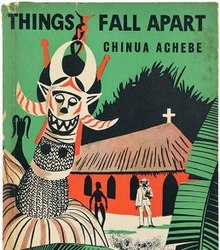
5. African Literature
The Africa consists of 54 countries in total, however, the African literature has a unique theme and styles. Their literature often to be relevant to its colonial background, and also connected to their traditions and culture, which makes their literature more unique. In addition, their literatures are often known as subversive and expressive contents.
Moreover, oral and composed narrating conventions have had an equal turn of events, and from multiple points of view they have affected one another. Old Egyptian recorders, early Hausa and Swahili copyists and memorizers, and contemporary scholars of famous novellas have been the conspicuous and essential momentary figures in the development from oral to abstract customs. What occurred among the Hausa and Swahili was happening somewhere else in Africa—among the Fulani, in northern Ghana among the Guang, in Senegal among the Tukulor and Wolof, and in Madagascar and Somalia.
One of the most famous African novel is entitled “Things Fall Apart” written by Chinua Achebe, Things Fall Apart exhaustively envisions how the Nigerian Igbo people group worked preceding expansionism. The divisions in this network go with the deplorable fall of the legend, Okonkwo, whose chivalrous however careless remain against expansionism closes in a forlorn self-destruction. Achebe's astuteness is adequate to move perusers past recriminations or authentic fault, since the Igbo people group adjusts to oblige Christianity and new types of pioneer administration. Similarly as the novel's title cites Yeats' sonnet The Second Coming, Achebe's African way of thinking of equilibrium in everything runs after a millennial association with Western innovation. Here’s some excerpt from the novel “Things Fall Apart”
“The drums beat and the flutes sang and the spectators held their breath. Amalinze was a wily craftsman, but Okonkwo was as slippery as a fish in water. Every nerve and every muscle stood out on their arms, on their backs and their thighs, and one almost heard them stretching to breaking point. In the end, Okonkwo threw the Cat”
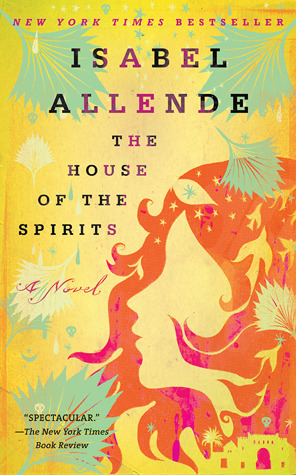
6. Latin American Literature
The Latin America is generally consists of all the countries in South America, in addition to Mexico, Central America, and the Islands of the Caribbean, indeed, there’s also a lot of country in the Latin America region. The Latin American mostly adapted their literature from the Aztecs and Mayans, two of the great ancient civilizations of our world, also, the themes of their literature are usually characterized by mysticism, magic, uniqueness, raw creativity, and wonder. Them, too give way and introduced “magical realism”.
Magical realism is a classification of writing that portrays this present reality as having a propensity of sorcery or dream. Mystical authenticity is a piece of the authenticity classification of fiction. Inside a work of supernatural authenticity, the world is as yet grounded in reality, however fantastical components are viewed as ordinary in this world. It is different from what we know “fantasy”.
One example of a magical realism novel is ”House of Spirits(La casa de los Espíritus)” written by Isabel Allende. The novel was published in 1982, Isabel Allende's presentation novel narratives the violent political occasions of post provincial Chile, through the lives of four ages of the rich Trueba family. The extraordinary is available from the start, with Allende portraying the supernatural capacities of one of the novel's principle heroes, Clara. Expect ghosts blended into the consistently, time shifts in the story and signs being figured it out. A genuine show-stopper, of the sorcery authenticity classification, yet additionally of women's activist and Chilean writing. Here’s some excerpt from the novel ”House of Spirits(La casa de los Espíritus)”
“That was Marcos’s longest trip. He returned with a shipment of enormous boxes that were piled in the far courtyard, between the chicken coop and the woodshed, until the winter was over. At the first signs of spring he had them transferred to the parade grounds, a huge park where people would gather to watch the soldiers file by on Independence Day, with the goosestep they had learned from the Prussians. When the crates were opened, they were found to contain loose bits of wood, metal, and painted cloth. Marcos spent two weeks assembling the contents according to an instruction manual written in English, which he was able to decipher thanks to his invincible imagination and a small dictionary. When the job was finished, it turned out to be a bird of prehistoric dimensions, with the face of a furious eagle, wings that moved, and a propeller on its back.”
With all of that, it may be seem that different regions from the world has their very own unique way in terms of literature, all of the literature around the world is really fascinating and amazing. Now that I’ve shown you the different dominant themes and styles of literature from Southeast Asia, East Asia, South and West Asia, Anglo-America and Europe, Africa, and Latin America. I hope that you’ve learned something new and surprising thing about the different themes and styles from around the world!
8 notes
·
View notes